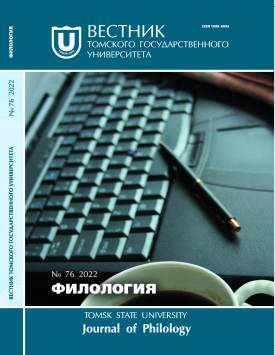Leo Tolstoy’s The Infected Family and George Eliot’s Romola: Two answers to the “woman’s question”
The aim of the study is to prove that the intellectual and moral-philosophical pathos of George Eliot’s novel Romola (1862-63), written on historical material, could have become a stimulus for Leo Tolstoy to create the comedy The Infected Family (1863-64). Eliot’s novel was published in September-December 1863 in the Zapiski Otechestva [Notes of the Fatherland] journal. The edition of Romola of 1863 in English, stored in the Yasnaya Polyana Library, confirms the fact of reading. There are marginalia in the edition, the belonging of which has not been unambiguously established. It is noteworthy, however, that most of them are associated with the description of the personality and beliefs of Girolamo Savonarola, the historical person who is one of the main characters in Eliot’s novel. Tolstoy was well acquainted with the religious and political ideas of Savonarola. An additional argument in favour of the writer’s acquaintance with Romola is that the novel was based on historical material, and the writer began preparations for work on War and Peace in the autumn of 1863. The author of the article tries to prove that both Romola and The Infected Family became a space to express the writers’ views on the role and vocation of women. Following Eliot, Tolstoy makes the center of his comedy the plot of the heroine’s unhappy marriage and shows the struggle of ideas that unfolds around her. The fate of Romola, who is looking for her mission, is embodied here in two heroines - Lyubochka, the puerile daughter of the landowner, and Katerina Matveevna, the satirically depicted nihilist. The character of Lyubochka is the “focus” of the plot action: it is her marriage that opens the eyes of the characters to the true appearance of the “new people” and leads to a partial recovery of the Pribyshev family from the “infection”. It is assumed that Lyubochka could approach the characteristic Tolstoy type of perfecting heroine, but this potential of the image was not realized in the comedy. An essential basis for comparing the two works is the plot of the escape of a young woman from home, caused by the heroine’s disappointment in her chosen one. Tolstoy embodies it in the character of Katerina Matveevna. In the finale, the writer shows that the heroines, carried away by new ideas, are equally unhappy, they have no life purpose and prospects. However, Eliot in her novel suggests a different ending: caring for people, outside of the family or any religious and social theories, becomes Romola’s life purpose. The study shows that Tolstoy could not accept the self-realization of the heroines in the social sphere: any woman’s aspiration for work outside the family circle was an object of ridicule for him at that moment. At the same time, the writer does not express a clear position on what the purpose of a woman should be. This incompleteness could be the reason why Tolstoy did not complete the comedy, but returned to the concept of the epic novel War and Peace. At the end of the study the author concludes that Tolstoy’s reading of Romola could further the implementation of his key ideas. The writer’s latent polemic with George Eliot on the question of the mission of women will continue in War and Peace and in Anna Karenina. The author declares no conflicts of interests.
Keywords
George Eliot, Leo Tolstoy, “woman’s question”, nihilists, comedyAuthors
| Name | Organization | |
| Gnyusova Irina F. | Tomsk State University | irbor2004@mail.ru |
References

Leo Tolstoy’s The Infected Family and George Eliot’s Romola: Two answers to the “woman’s question” | Vestnik Tomskogo gosudarstvennogo universiteta. Filologiya – Tomsk State University Journal of Philology. 2022. № 76. DOI: 10.17223/19986645/76/12
